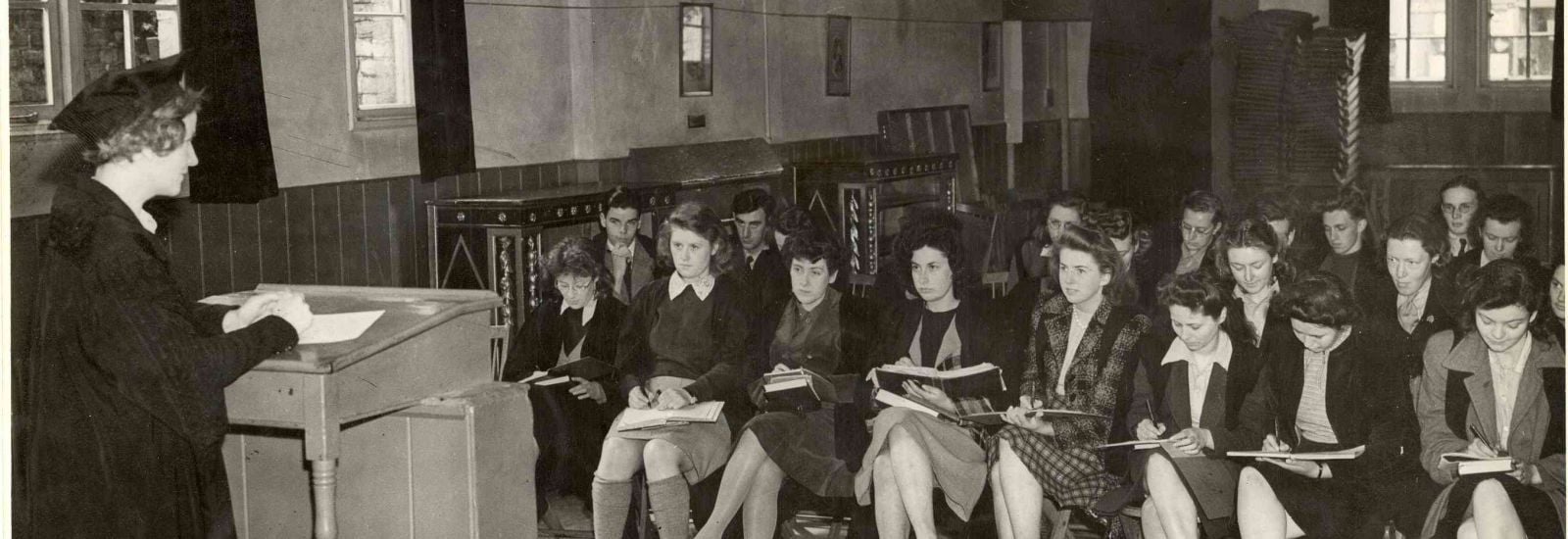
History
Oxford is a unique and historic institution. As the oldest university in the English-speaking world, it can lay claim to nine centuries of continuous existence.
Here’s a timeline of key dates:

Evidence of teaching
There is no clear date of foundation but teaching existed at Oxford in some form in 1096.
(Image credit: Shutterstock)

A Paris ban
Oxford developed rapidly from 1167, when Henry II banned English students from attending the University of Paris following a quarrel with Thomas Becket.
(Image: Thomas Becket, Archbishop of Canterbury stained glass window in the Chapter House at Westminster Abbey. Credit: Shutterstock.)

A notable visitor
In 1188, the historian Gerald of Wales gave a public reading to the assembled Oxford dons (university lecturers, especially at Oxford or Cambridge). As a royal clerk to the king and two archbishops, Gerald of Wales travelled widely and wrote extensively.
(Image credit: Shutterstock)

First overseas student
In around 1190 the arrival of Emo of Friesland, the first known overseas student, set in motion the University’s tradition of developing international scholarly links.
(Image credit: Shutterstock)

The title of Chancellor
By 1201 the University was headed by a ‘magister scholarum (head of an ecclesiastical school) Oxonie’, on whom the title of Chancellor was later conferred in 1214, and in 1231 the Masters were recognised as a universitas or corporation.
(Image: The current Chancellor, Lord Patten of Barnes.)

First colleges
During the 13th century, rioting between town and gown (townspeople and students) hastened the establishment of primitive halls of residence.
These were succeeded by the first of Oxford’s colleges, which began as endowed houses or medieval halls of residence, under the supervision of a Master.
Established between 1249 and 1264, University, Balliol and Merton Colleges are the oldest.
(Image: Merton College and chapel, from the first quadrangle, 1775-1827. Credit: Oxford University Images / Oxfordshire History Centre)
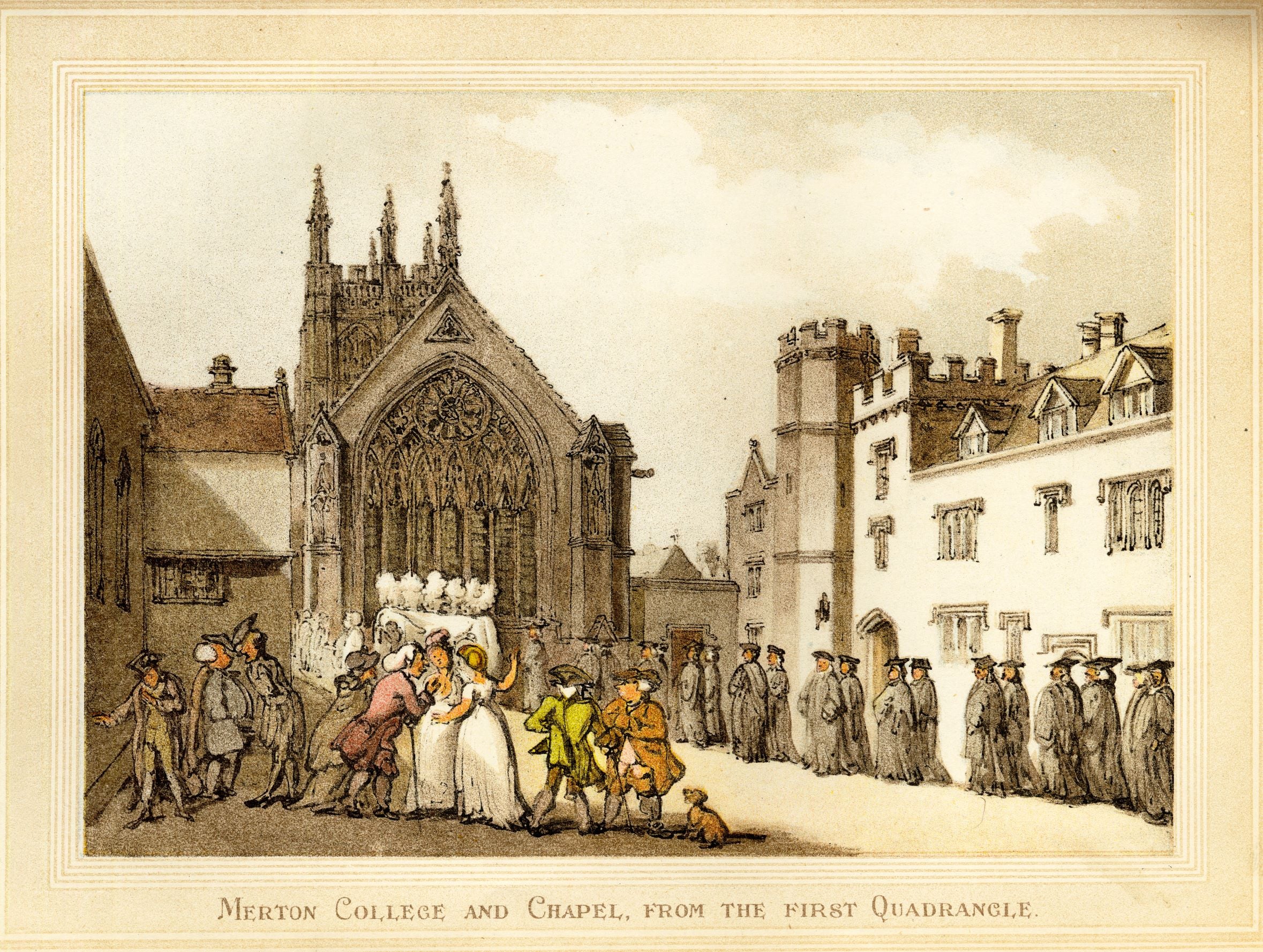

Tributes from kings
Less than a century later, Oxford had achieved eminence above every other seat of learning, and won the praises of popes, kings and sages by virtue of its antiquity, curriculum, doctrine and privileges. In 1355, Edward III paid tribute to the University for its invaluable contribution to learning. He also commented on the services rendered to the state by distinguished Oxford graduates.
(Image credit: Shutterstock)

Religious and political controversy
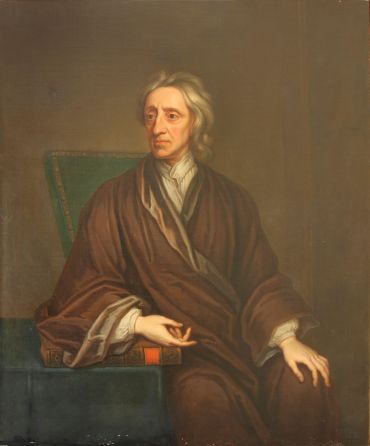 John Locke (1632-1704) by Thomas Gibson. Image: Oxford University Images / Bodleian Library
John Locke (1632-1704) by Thomas Gibson. Image: Oxford University Images / Bodleian LibraryJohn Wyclif, a 14th-century Master of Balliol, campaigned for a Bible in English, against the wishes of the papacy.
In the 16th century, Henry VIII forced the University to accept his divorce from Catherine of Aragon, and the Anglican churchmen Cranmer, Latimer and Ridley were later tried for heresy and burnt at the stake in the city.
The University was Royalist during the Civil War and Charles I held a counter-Parliament in the University’s Convocation House.
In the late 17th century, the Oxford philosopher John Locke, suspected of treason, was forced to flee the country.

Scientific discovery and religious revival
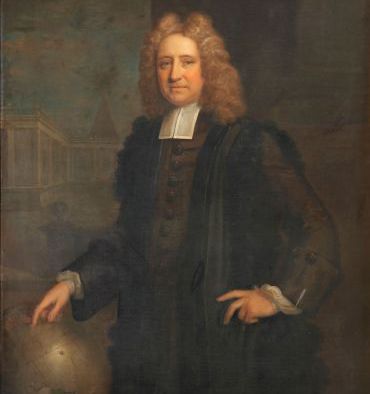 Edmond Halley, astronomer (1656-1742), by Thomas Murray. OUImages / Bodleian Library
Edmond Halley, astronomer (1656-1742), by Thomas Murray. OUImages / Bodleian LibraryEdmond Halley, Professor of Geometry, predicted the return of the comet that bears his name.
John and Charles Wesley’s prayer meetings laid the foundations for the Methodist Society.
Find out more:
British Prime Ministers | University of Oxford
Award winners | University of Oxford

The Oxford Movement
From 1833 onwards, the Oxford Movement sought to revitalise the Catholic aspects of the Anglican Church. One of its leaders, John Henry Newman, became a Roman Catholic in 1845 and was later made a Cardinal. In 2019 he was canonised as a saint.
(Image: Close-up of Cardinal Newman bust from Trinity College Garden Quad, Oxford University. Credit: Shutterstock.)

A famous debate
In 1860 the new University Museum was the scene of a famous debate between Thomas Huxley, champion of evolution, and Bishop Wilberforce.

Women become members
From 1878 academic halls were established for women, who were admitted as full members of the University from 1920. By 1986, all of Oxford’s male colleges had changed their statutes to admit women and, since 2008, all colleges have admitted men and women.
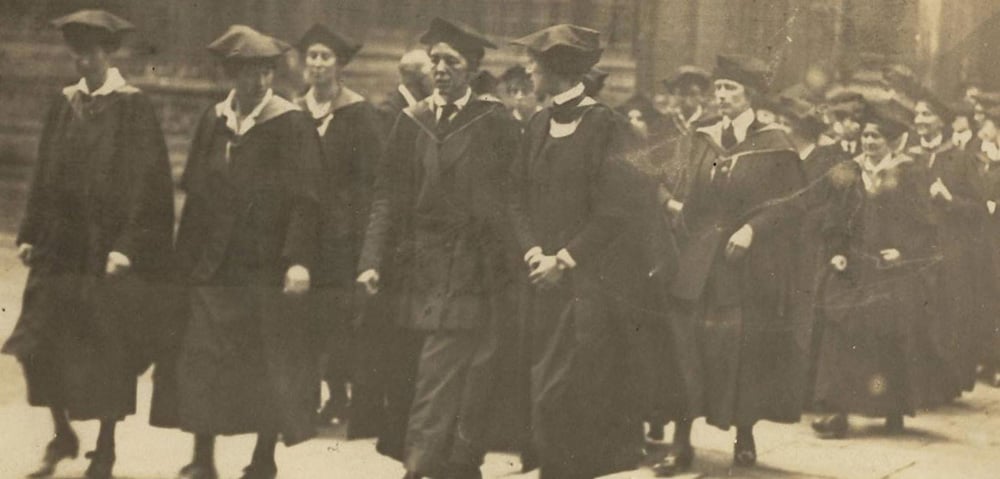
(Image: The first women to be awarded degrees at Oxford University. Credit: Lady Margaret Hall.)

Major research capabilities
During the 20th and early 21st centuries, Oxford established major new research capacities in the natural and applied sciences, including medicine. In so doing, it has enhanced and strengthened its traditional role as an international focus for learning and a forum for intellectual debate.

A life-saving vaccine
Oxford University has been at the centre of the COVID-19 response from the very onset of the crisis, remaining at the forefront of global efforts to combat the disease and to mitigate its many effects, such as developing a vaccine and identifying treatments. By early 2022, more than 2.6 billion doses of the Oxford/AstraZeneca vaccine had been supplied to over 180 countries, with approximately two-thirds going to low and middle-income countries. The vaccine is estimated to have helped prevent 50 million COVID-19 cases, five million hospitalisations, and saved more than one million lives.

(Image: Seven of the Oxford academics recognised in the Queen’s Birthday Honours for their work on stopping the pandemic. Credit: John Cairns.)